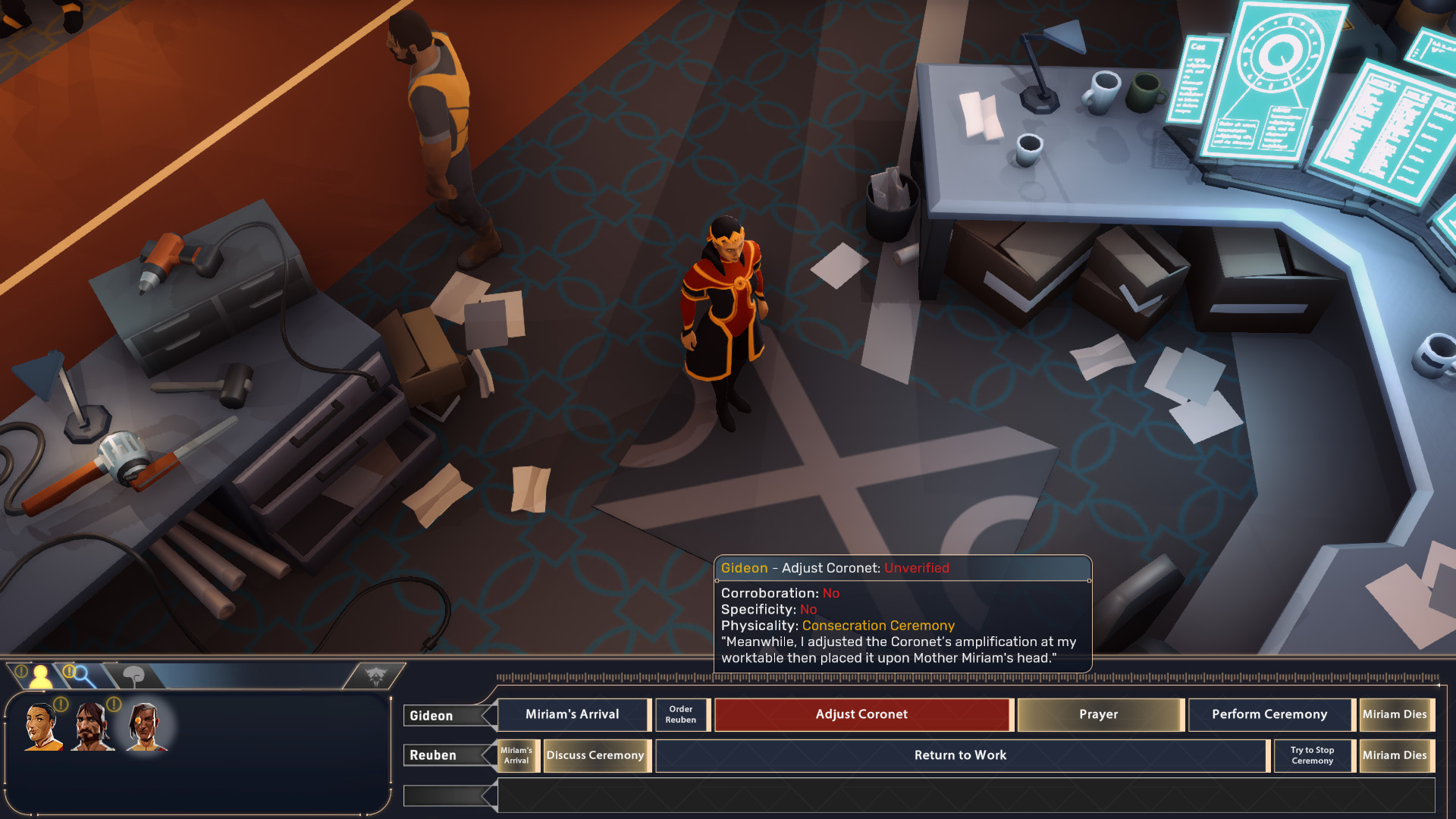Lucifer Within Us Review
You’ve gotta hand it to Kitfox, they know how to make a game look good. Lucifer Within Us is a visual delight, with gorgeous details and striking character designs. The Church of Ain Soph, which you investigate for the Inquisition, is a simmering bubble of daemonic drama. And at just 3-ish hours long, it’s just the right amount of time for what it tries to do. But even with all of the eye candy, impeccable voice work, and intriguing bits of worldbuilding, it still ends up missing the mark.
Lucifer’s basic premise is a compelling draw: serious digital exorcist unmasks hidden daemons amongst us. The “digital” bit is a little vague, but the gist is that cybernetics and ancient relics exist side by side in a pseudo-syncretistic new world order. As Sister Ada, you’ve arrived at the church to investigate a bizarre murder on the day of an important mass. Daemons haven’t been seen in the world for 111 years, yet the Church is still a big deal today. Humans and their neurotic rituals, am I right? Daemons, of course, are responsible for concealing themselves within vulnerable souls and nudging people to commit crimes. It falls upon Sister Ada to interrogate witnesses, suspects, and examine evidence to figure out what’s happening.
Not a great first impression

The opening tutorial chapter is probably the most painful hurdle in the game, which is incredibly unfortunate as a first-time user experience. There’s a lot going on for what is essentially a pretty intuitive process — walk around and look at stuff, talk to people, pick apart their testimonies. When you’ve got enough information, you can peer into a suspect’s “sanctum” to reveal psychological motivations and guess which daemon is squatting inside. It’s a lot of walking back and forth and contradicting suspects’ testimonies, admittedly part of any normal interrogation process, but can get tedious. And while the game leans heavily on player intuition to move the story along, this can be quite a double-edged sword without stronger visual and mechanical nudges. Occasionally things devolve into mashing the “Contradict” button on every piece of testimony just to get something to happen.
Ada can make as many accusations as necessary, all without consequences. Here, an optional difficulty setting or vague hint feature would have been nice — being able to repeatedly fail is helpful when you’re stuck, but effectively undercuts Ada’s authority as an elite exorcist. Simple dialogue changes would have made for a much smarter interrogation, too; in the first chapter, Ada can ask suspects about the Coronet Limiter, a piece of evidence that was found intact at the crime scene at the beginning of the chapter. But moving down the list of evidence, when you ask about the actual Coronet, the suspect will lament that the Limiter is missing despite the fact that you showed it to them moments before.
No need for advocates

It would have been great to see the daemonological elements played up more, too — all you get is a quick glimpse at the suspect’s inner thoughts which are then auto-assigned to relevant sections of their testimony. I’d very much like to see a version of Lucifer Within Us where Ada has more agency and flexibility in analyzing daemonic influences, though it is a nice, arcane touch to have her speak their names aloud to begin the exorcism proper. It’s also a relief to see the exorcisms have a discernible effect on the daemons’ victims — most people don’t react well to having evil entities ripped out of their psyches.
The “digital” part of the exorcism process isn’t quite clear either (unless it’s referring to your ability to visually reconstruct crimes based on testimony), and it only really pops up in the rather toothless twist at the end. As a rule I enjoy the “less is more” school of inference in storytelling, but the reveal at the end of Lucifer Within Us doesn’t have quite the profound impact intended. Based on early developments in the game, it’s abundantly clear where everything is headed, as well as the main culprit behind all the daemonic activity. And given that this is a visual novel, where words are foundational pieces of the game, sloppy typos dull the game’s shine.
Still, it’s a neat, ambitious game that teases us with the silhouette of a rich, engaging mythology and the role of digital exorcisms in this particular world. Its stellar voice cast carries much of the game’s narrative momentum on their shoulders, especially Alex Grossman and Miguel Doucet, who play Brother Gideon. But even with all its ambition and aesthetics, Lucifer’s gameplay and narrative could have been refined into a leaner, meaner experience befitting its daemonic themes.
[Reviewed on PC]

